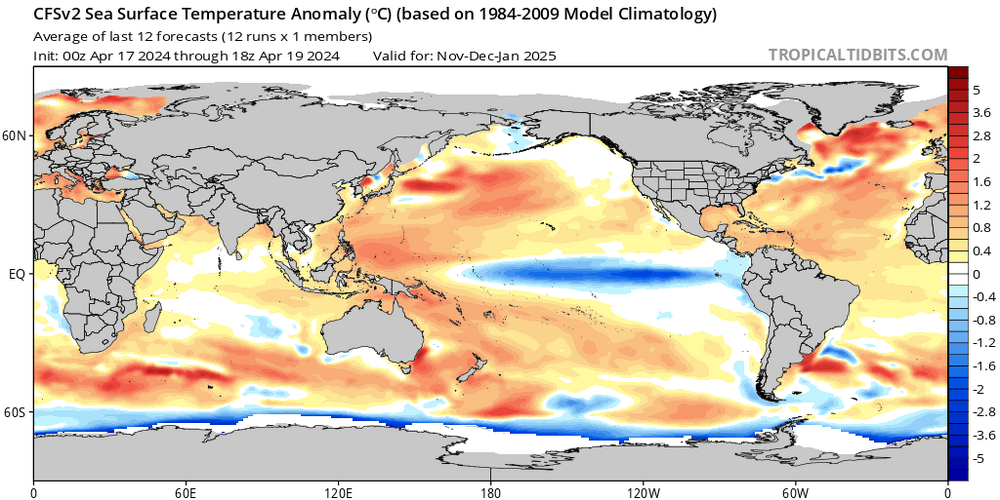
GaWx
Members-
Posts
11,381 -
Joined
About GaWx

Profile Information
-
Four Letter Airport Code For Weather Obs (Such as KDCA)
KSAV
-
Gender
Not Telling
-
Location:
SAV, GA
-
Interests
weather stats, sports, walking/hiking
Recent Profile Visitors
9,198 profile views
-
1. It was warmer today here but still very pleasant with dewpoints as low as the upper 40s early this evening. The walking was so enjoyable. 2. 114 years tomorrow Atlanta amazingly enough had 1.5” of snow!! This is to me easily its most freak winter storm there on record. It is 3 weeks later than the second latest accumulating snow there on record, three weeks later than Greensboro’s, one week later than Raleigh’s/GSP’s, and 5 days later than Charlotte’s latest measurables! More details are here:
-
-
Yesterday and today have been two additional awesome days in much of the SE US. A little over half of the days this month have been this way here though April has averaged slightly warmer than normal.
-
Here’s another source for Arctic ice extent as of 4/21/24 fwiw: this one (cryospherecomputing.com) has been running a bit lower than NSIDC (NSIDC 3/31/24 was ~14.8 vs cryospere’s ~14.35). Now NSIDC is ~14.25 vs cryosphere’s ~14.1. Anyone know why the diff and whether or not one is more credible than the other? I generally have thought of NSIDC as the “go to” single best source.
-
Extended summer stormlover74 future snow hole banter thread 23
GaWx replied to BxEngine's topic in New York City Metro
And even more so during summer (on average) since 2007. During these last 17 summers, 12 (71%) have averaged sub -0.25 NAO (my threshold for -NAO vs neutral) vs only 3 (18%) with a +0.25+ (+NAO), meaning a 4:1 ratio! Compare that to summers 1950-2006, which had a much more balanced 33% sub -0.25 NAO and 32% +0.25+ (~1:1 ratio). -
Extended summer stormlover74 future snow hole banter thread 23
GaWx replied to BxEngine's topic in New York City Metro
The sunspots will very likely still be active next winter…likely 100+ as they shouldn’t start dropping sharply for couple of years. https://www.sidc.be/SILSO/DATA/SN_m_tot_V2.0.txt -
Extended summer stormlover74 future snow hole banter thread 23
GaWx replied to BxEngine's topic in New York City Metro
Very high (>200 4/17-20!): 4 day avg of 220, second only to June of 2023 since 2004. https://www.sidc.be/SILSO/DATA/EISN/EISN_current.txt -
Extended summer stormlover74 future snow hole banter thread 23
GaWx replied to BxEngine's topic in New York City Metro
If you’re referring to -NAO winters, there have been only 6 since 1979-80, including the two you listed. All 6 were near solar minimums with avg daily sunspots under 35: other 4 1984-5, 1986-7, 2009-10, 2020-21. Every solar min since 1980 has had 1-2 -NAO winters. Coincidence? -
Extended summer stormlover74 future snow hole banter thread 23
GaWx replied to BxEngine's topic in New York City Metro
1. I’ll be surprised if ACE isn’t 150++ based on combo of La Niña and hot ATL. 2. I don’t think those very long range precip maps are reliable. At this time last year, they were similarly wet in/off FL. Also, even if they were to verify, that wouldn’t necessarily guarantee several strong TCs tracking near SE though I’m thinking there will probably be at least one. Wetness can come from other things. 3. We could still have a very active year like 1995/2010 with no E hits N of FL. 2010 is one of top analogs of at least two H forecasters. Highest risk to US seems to be when ASO RONI 0 to -1.0, which may occur unfortunately. -
Extended summer stormlover74 future snow hole banter thread 23
GaWx replied to BxEngine's topic in New York City Metro
And note that he’ll likely not use the preceding H seasons (1995, 2010) as analogs despite being very active because neither had an E coast landfall N of FL. -
Extended summer stormlover74 future snow hole banter thread 23
GaWx replied to BxEngine's topic in New York City Metro
Just for once I’d love to see JB predict a warm winter for the bulk of the E US and stick with it! But he’s already been trying to suggest a +PDO for next winter despite there being -PDO on all TT extended SSTa maps I’ve seen. Here may be the reason he’s suggesting +PDO, which I feel will very likely fail. Below is a WB CFS SSTa map for NDJ (1981-2010 climo): Compare the above to TT CFS (same model!) NDJ map below (similar climo of 1984-2009): -PDO 1. Why is it so cold S Japan SE/Eward on WB but almost opposite on TT? 2. Why is there ~warmest SSTa in N Pac off Cali/Baja on WB (JB already saying he likes it there because that’s consistent with +PDO) while TT’s only slightly warm there with much warmer in WPAC E/SE of Japan? 3. Why is WB so cold in IO vs NN on TT? 4. Why is WB cold in SPAC E of Aust. vs warm on TT? 5. Why is WB so warm in SPAC W of S.A. vs NN on TT? 6. Why is it BN off SE US on WB vs AN on TT? 7. Why is strip N of Antarctica AN on WB vs BN on TT? My point is that I’m suggesting the WB CFS SSTa maps, which I feel are causing JB to think +PDO next winter, are likely way off for whatever reason(s). I’m predicting a -PDO as per TT and typical climo of robust La Niña/consistent with marine heatwave remaining E of Japan. -
It’s deceptive because this CANSIPS DJF (based on 1981-2010 base) is actually sig colder than last winter from Midwest to MidATL to NE with all areas forecasted within +1 to +4F vs last winter’s +4 to +12F! Ex: Chi was +8 and is forecasted to be only +3 NYC/DC were +5 and fcast is for only +2 Of course it remains to be seen whether these forecasts are once again going to end up too cold. Still, a place like Chi has an excellent chance to not be nearly as warm as last winter.
-
Based on a recent analysis I did, the threat for CONUS landfalls appears to have been the highest when the ASO ONI was 0.0 to -1.0 with closer to just an average threat for sub -1.0. The April dynamic model avg is only down to weak La Nina (-0.7) for ASO. If that were to verify, even with a adjustment further down for RONI, that might be kind of scary as far as CONUS landfall history suggests depending on how RONI lines up with ONI. Hopefully, ASO ONI will come in lower than -0.7. Some of the individual models like UKMET (a very good model) give hope for that. Of the more followed dynamic models for ASO: - UKMET is the implied coldest for ASO but it doesn't go that far. It is -1.3 for JAS, which implies a bit colder than that for ASO. It did very well last year and thus I like seeing it this strong. - CFS had by far been the coldest for ASO at -1.9, but it has since warmed considerably to -1.3. It tended to be too cold last year. - Next is the CMC, which is -1.1 in ASO. - JMA is -0.7 in ASO, right at the average. In general, the JMA has averaged only a small bias and thus has been a pretty good model. That's concerning to me for the CONUS risk. - Then comes MeteoFrance's -0.4 as of ASO, but it was way too warm for last year. - Next is the Euro's -0.2, which is considerably warmer than last month's run. It also has a warm bias though it wasn't nearly as off as MeteoFrance was last year. - Bringing up the rear is Australia's Access's +0.1 though it like MeteoFrance was way too warm last year.
-
What, where,and when would these wx impacts be? How significant would they be in relation to other factors? Also, keep in mind that the magnitude, scope, and timing of the effects of the 2022 Hunga Tonga volcano on the globe's wx are still being sorted out/debated. Several studies I've seen suggest that's its strongest effects may not be over for a good number of years (rest of the decade) with the most significant possibly still ahead due to a significant increase in water vapor that rose into the stratosphere. It is all very complex!
-
I just realized that the difference between ONI and RONI rose to a whopping 0.64C for JFM, the highest yet! Whereas ONI was +1.50, RONI was already down to +0.86. This large difference implies the importance of focusing on RONI to negate the portion of ONI that warmed strictly due to recent strong warming in the overall ocean tropics outside of Nino 3.4 as opposed to the warming related to El Niño, itself. For similar reasons using RONI would allow for the underlying intensity of the expected upcoming La Niña to be much better reflected. RONI: https://www.cpc.ncep.noaa.gov/data/indices/RONI.ascii.txt












